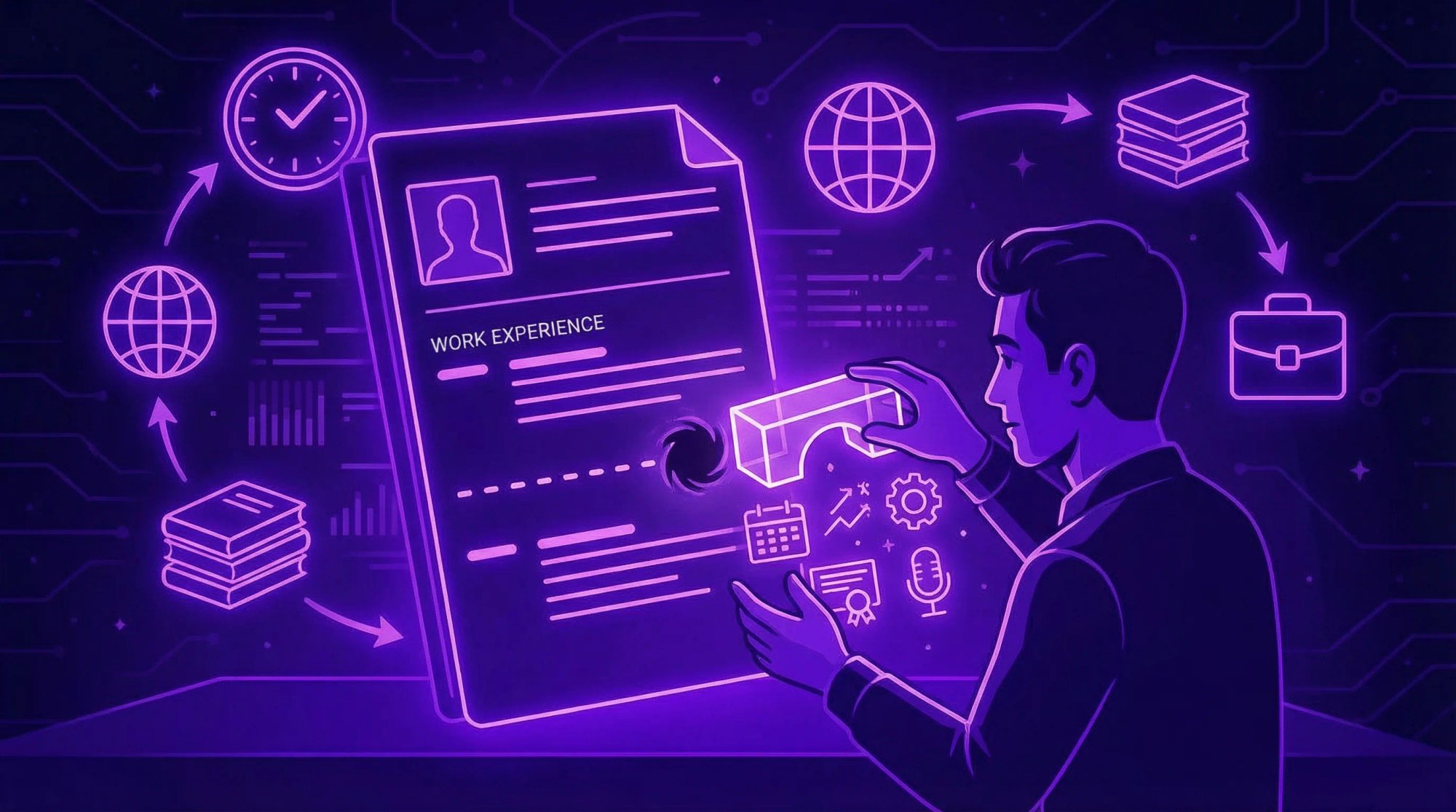Personal Website: Positively Impact Your Career Today

Personal Website: Positively Impact Your Career Today
A personal website is about you.
- You want to be a successful professional.
- You have something to offer—skills and experience.
- You care about your professional image.
A professional image requires a professional presentation.
Perhaps the most effective tool in your career-building toolkit is your personal website. A well-designed personal website shows that you intend to be taken seriously by fellow professionals.
Your website also acts as a career communications center. All you need to do is give someone your web address, and they can learn all about you in the way you want your story told.
This is the heart of personal branding: making a great impression.
A personal website is the key to giving a great impression.
What’s on a personal website?
I’ll show you.
Homepage Introduction
The first impression you make is when a visitor lands on your homepage.
You have about 6-8 seconds to make that great first impression.
You want to quickly and clearly show who you are.
These things are important:
- Impactful graphic design.
- A statement of your unique value.
- Easy navigation so your visitor knows what to do next.
Graphic Design
Graphic design doesn’t have to be fancy or overwhelming—unless you’re a graphic designer. But it must be clean, professional, and engaging. You want to introduce visitors to your world and make them want to stay.
Unique Value Proposition
Your unique value proposition (UVP) is a sentence or tagline that sums up why you matter to your visitors. It should be brief and striking.
- “I innovate, impact, and inspire.”
- “Bringing together quality and creativity.”
- “Tailoring solutions to meet your needs.”
There are unlimited ways to concisely state your UVP. Make it state your position boldly.
Easy Navigation
Your website should provide a compelling User Experience (UX). This means clear messaging and easy-to-use navigation throughout your site. After all, they want to concentrate on you, not get lost in the web pages.
NOTE: If you aren’t a graphic designer or a UX expert, you can easily find website templates designed by professionals. The templates look great, are easy to navigate, and all you do is insert your information, edit, and publish. Simple.
After the First Impression
Now that you’ve set the stage with your professional web design, UVP, and excellent navigation, the rest of the website must prove that you mean what you say.
After those crucial first seconds, visitors want to learn about you.
About Me Section or Page
On your About Me page, you can offer a detailed biography sharing your professional background, achievements, and personal interests, all delivered with a personal touch.
You may include:
- A personal introduction.
- A brief narrative about your background and experience.
- Some personal insights you’ve gained on your journey.
- A professional headshot or a series of photos.
- Your professional philosophy or approach to problem-solving.
Résumé or CV
Those visitors wanting to know more about your work experience appreciate a downloadable version of your résumé or CV.
A résumé can be posted on a web page, but updating it is more difficult than a single PDF that can be downloaded.
Skills Section
In addition to your downloadable résumé, provide a skills section for quick browsing. Consider a visual representation of your skillset, possibly through charts or icons.
Include both hard skills (technical abilities) and soft skills (communication, leadership).
Portfolio or Work Samples
Here’s where you show—rather than tell—your visitors what you can do. The proof is in the work you’ve done.
If you are at the beginning of your career with little or no experience, you can proudly post academic projects and examples of collaboration with others.
Great additions to your About Me are case studies showcasing your problem-solving skills and creativity.
Awards and Certifications
Include a section dedicated to any awards, recognitions, and professional certifications you have earned.
Testimonials and Reviews
Showcase endorsements from colleagues, clients, and employers in a prominent location on your website. This will build credibility. Testimonials go well on your home page or portfolio.
Blog Posts and Articles
If you write, you can start a blog or at least post articles that you’ve written.
The point is to regularly provide new content demonstrating your expertise and interests. Thought leadership articles, industry insights, or personal development topics are appropriate and interesting.
Services Offered (if applicable)
For those offering products or professional services, a separate product page is recommended. Post a clear outline of the professional services you provide. Offer pricing details or an invitation to contact you for quotes.
Contact Information
Make your contact information available and easy to find.
REMEMBER: Only include contact info that you feel comfortable sharing in public. Keep your privacy in mind when choosing what to publish.
- Name
- Company name (if applicable)
- Professional email address
- Links to social media profiles
- Links to professional networking sites.
- Messaging or professional chat apps (like Slack).
Design and use a contact form to facilitate easy communication if your website supports it.
Looking Forward
Throughout your career, you will likely search for jobs multiple times. That’s what our service, AiApply, is here to support.
You are 80% more likely to get hired if you use AiApply.
Here’s why.
- We automate the process of targeting each job application with a customized résumé, cover letter, and follow-up email.
- We format your résumé to pass ATS automatic scanning.
- You can practice your job interview using targeted, AI-generated questions.
There’s so much more we can do to help you.
- Job Board
- AI headshots
- Résumé translator
- AI-answer interview questions
Visit AiApply today to start for free.
Personal Website: Positively Impact Your Career Today
A personal website is about you.
- You want to be a successful professional.
- You have something to offer—skills and experience.
- You care about your professional image.
A professional image requires a professional presentation.
Perhaps the most effective tool in your career-building toolkit is your personal website. A well-designed personal website shows that you intend to be taken seriously by fellow professionals.
Your website also acts as a career communications center. All you need to do is give someone your web address, and they can learn all about you in the way you want your story told.
This is the heart of personal branding: making a great impression.
A personal website is the key to giving a great impression.
What’s on a personal website?
I’ll show you.
Homepage Introduction
The first impression you make is when a visitor lands on your homepage.
You have about 6-8 seconds to make that great first impression.
You want to quickly and clearly show who you are.
These things are important:
- Impactful graphic design.
- A statement of your unique value.
- Easy navigation so your visitor knows what to do next.
Graphic Design
Graphic design doesn’t have to be fancy or overwhelming—unless you’re a graphic designer. But it must be clean, professional, and engaging. You want to introduce visitors to your world and make them want to stay.
Unique Value Proposition
Your unique value proposition (UVP) is a sentence or tagline that sums up why you matter to your visitors. It should be brief and striking.
- “I innovate, impact, and inspire.”
- “Bringing together quality and creativity.”
- “Tailoring solutions to meet your needs.”
There are unlimited ways to concisely state your UVP. Make it state your position boldly.
Easy Navigation
Your website should provide a compelling User Experience (UX). This means clear messaging and easy-to-use navigation throughout your site. After all, they want to concentrate on you, not get lost in the web pages.
NOTE: If you aren’t a graphic designer or a UX expert, you can easily find website templates designed by professionals. The templates look great, are easy to navigate, and all you do is insert your information, edit, and publish. Simple.
After the First Impression
Now that you’ve set the stage with your professional web design, UVP, and excellent navigation, the rest of the website must prove that you mean what you say.
After those crucial first seconds, visitors want to learn about you.
About Me Section or Page
On your About Me page, you can offer a detailed biography sharing your professional background, achievements, and personal interests, all delivered with a personal touch.
You may include:
- A personal introduction.
- A brief narrative about your background and experience.
- Some personal insights you’ve gained on your journey.
- A professional headshot or a series of photos.
- Your professional philosophy or approach to problem-solving.
Résumé or CV
Those visitors wanting to know more about your work experience appreciate a downloadable version of your résumé or CV.
A résumé can be posted on a web page, but updating it is more difficult than a single PDF that can be downloaded.
Skills Section
In addition to your downloadable résumé, provide a skills section for quick browsing. Consider a visual representation of your skillset, possibly through charts or icons.
Include both hard skills (technical abilities) and soft skills (communication, leadership).
Portfolio or Work Samples
Here’s where you show—rather than tell—your visitors what you can do. The proof is in the work you’ve done.
If you are at the beginning of your career with little or no experience, you can proudly post academic projects and examples of collaboration with others.
Great additions to your About Me are case studies showcasing your problem-solving skills and creativity.
Awards and Certifications
Include a section dedicated to any awards, recognitions, and professional certifications you have earned.
Testimonials and Reviews
Showcase endorsements from colleagues, clients, and employers in a prominent location on your website. This will build credibility. Testimonials go well on your home page or portfolio.
Blog Posts and Articles
If you write, you can start a blog or at least post articles that you’ve written.
The point is to regularly provide new content demonstrating your expertise and interests. Thought leadership articles, industry insights, or personal development topics are appropriate and interesting.
Services Offered (if applicable)
For those offering products or professional services, a separate product page is recommended. Post a clear outline of the professional services you provide. Offer pricing details or an invitation to contact you for quotes.
Contact Information
Make your contact information available and easy to find.
REMEMBER: Only include contact info that you feel comfortable sharing in public. Keep your privacy in mind when choosing what to publish.
- Name
- Company name (if applicable)
- Professional email address
- Links to social media profiles
- Links to professional networking sites.
- Messaging or professional chat apps (like Slack).
Design and use a contact form to facilitate easy communication if your website supports it.
Looking Forward
Throughout your career, you will likely search for jobs multiple times. That’s what our service, AiApply, is here to support.
You are 80% more likely to get hired if you use AiApply.
Here’s why.
- We automate the process of targeting each job application with a customized résumé, cover letter, and follow-up email.
- We format your résumé to pass ATS automatic scanning.
- You can practice your job interview using targeted, AI-generated questions.
There’s so much more we can do to help you.
- Job Board
- AI headshots
- Résumé translator
- AI-answer interview questions
Visit AiApply today to start for free.
Don't miss out on
your next opportunity.
Create and send applications in seconds, not hours.








